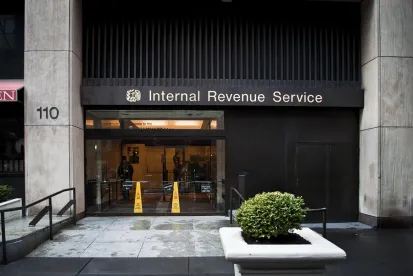The IRS issued proposed regulations under Section 4960 of the Internal Revenue Code of 1986, as amended (the “Code”), which was added as part of the Tax Cuts and Jobs Act. The proposed regulations published in the Federal Register on June 11, 2020, largely follow the IRS interim guidance under IRS Notice 2019-09. However, the IRS made some helpful changes in the proposed regulations which are briefly summarized below.
By way of background, Section 4960 imposes an excise tax equal to the corporate tax rate (21 percent for 2020) on that portion of a covered employee’s pay that exceeds $1 million or is treated as an excess parachute payment. The tax applies to an applicable tax-exempt organization (called an “ATEO”) or a related organization paying excess remuneration to a covered employee. The tax also applies to an ATEO’s payment of an excess parachute payment.
New Exceptions Under the Definition of a Covered Employee
Generally, under the proposed regulations, an employee is treated as a covered employee if he or she is one of an ATEO’s five highest-compensated employees, including pay from related organizations. Once an employee meets the definition of a covered employee, the employee is always a covered employee (even if the employee ceases to be one of the top five highest compensated employees or terminates employment).
However, the proposed regulations add several exceptions made in response to concerns that if a highly paid officer of a for-profit business provided volunteer services to a related ATEO, the for-profit business could find itself subjected to an allocable portion of the excise tax.
When identifying the five highest compensated employees, the proposed regulations specify that ATEOs can exclude employees meeting one of the three following exceptions:
-
Limited Hours Exception: This exception applies if 10% or less of the employee’s services are for the ATEO and all related ATEOs, and the ATEO pays no compensation (including granting deferred compensation, whether vested or unvested) for the services. The proposed regulations also include a “safe harbor” under which an employee who performs fewer than 100 hours of services as an employee of an ATEO (and all related ATEOs) during a year is deemed to have worked less than 10 percent of the employee’s total hours for the ATEO (and all related ATEOs).
-
Nonexempt Funds Exception: The proposed regulations also provide a limited “nonexempt funds” exception for employees of controlling taxable organizations that perform significant services as an employee of the ATEO. Under this exception, an employee is disregarded for determining an ATEO’s five highest-compensated employees for a year if (i) neither the ATEO, nor any related ATEO, nor any taxable related organization controlled by the ATEO pays the employee of the ATEO any remuneration for services performed for the ATEO (including granting deferred compensation, whether vested or unvested) and (ii) the employee provided services “primarily” to the related taxable organization or other non-ATEO (other than a taxable subsidiary of the ATEO) during the year. This primarily tests if the employee provided services to the related non-ATEO for over 50% of the employee’s total hours worked for the ATEO and all related organizations (including ATEOs) during the year.
-
Limited Services Exception: The IRS proposed regulations retain the exception from IRS Notice 2019-09 applicable when the ATEO pays less than 10 percent of employee’s total pay.
Calculation of the Excess Parachute Payment Tax
The prior IRS guidance provided that the excise tax was calculated referring to any excess parachute payment paid by the ATEO or any related organization. The proposed regulations narrow this, specifying that it is only the excess parachute payments made by the ATEO that are subject to the tax. Related non-ATEOs that pay an amount that would otherwise qualify as an excess parachute payment are not subject to this tax. The regulations also authorize the IRS to reallocate the payments if the IRS determines that the excess parachute payment was made by a related non-ATEO to avoid taxation.
The proposed regulations also provide that payments from related non-ATEO entities are included in both the base amount and the payments in the nature of compensation. This means that the pay from the ATEO, related ATEO, and related non-ATEO entities are all combined to determine if there is an excess parachute payment.
The proposed regulations make other clarifications addressing foreign organizations and governmental entities. Until final regulations are published, taxpayers may rely on either IRS Notice 2019-09 or the proposed regulations, including for periods preceding June 11, 2020.





 />i
/>i
